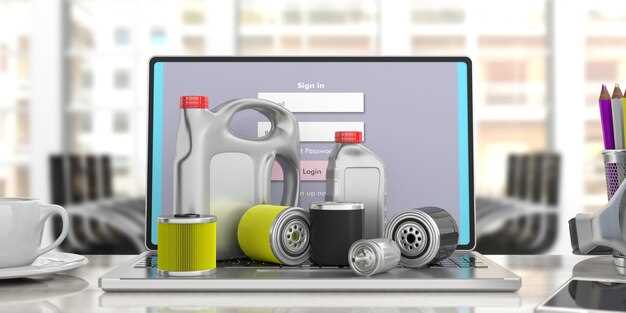
When it comes to maintaining a Toyota, understanding the most commonly replaced parts can save you time and money. Toyota vehicles are known for their reliability and longevity; however, like any automobile, they require periodic replacements to keep them running smoothly. Whether you are a seasoned car owner or new to the world of automotive maintenance, knowing which parts are likely to wear out can help you plan for future repairs.
This article aims to outline the top five most commonly replaced Toyota parts. We will delve into the reasons behind their frequent need for replacements and provide insights on when to consider a change. From essential components to minor accessories, being informed about these key elements will empower you as a vehicle owner. Understanding these common parts not only enhances your knowledge of your car but can also lead to cost-saving decisions when it comes to repairs and maintenance.
Whether your vehicle is a compact sedan or a rugged SUV, this guide will equip you with the information needed to keep your Toyota in peak condition. Recognizing potential issues early on can ensure a safer driving experience and prolong the lifespan of your beloved car. Let’s explore the most frequently replaced Toyota parts and keep your vehicle performing at its best.
Understanding Dedicated Replacement Components for Toyota Models

When it comes to maintaining the longevity and performance of Toyota vehicles, understanding dedicated replacement components is crucial. Toyota models are designed with specific parts tailored for optimal functioning. Each vehicle may require various replacements based on wear and tear, driving conditions, and maintenance habits.
The most commonly replaced parts include filters, brake pads, batteries, and spark plugs. Filters, such as oil and air filters, require regular attention to ensure that engine performance remains at its peak. Brake pads are essential for safety, and their timely replacement can prevent extensive damage to the braking system.
Batteries also warrant attention, especially in regions with extreme weather conditions. A failing battery not only impedes vehicle function but can also lead to further electrical issues. Spark plugs are another vital component that needs regular replacement to maintain engine efficiency and fuel economy.
Understanding the specific components that require replacement in your Toyota model can save time and money. Regular checks and timely replacements help keep vehicles running smoothly and can enhance overall safety on the road. Always opt for OEM (Original Equipment Manufacturer) parts to ensure compatibility and reliability.
Identifying Symptoms that Indicate Part Replacement is Necessary

Recognizing when Toyota parts need replacements is crucial for maintaining vehicle performance and safety. Several symptoms can signal that specific components are failing and require attention. Understanding these signs can help drivers act proactively, preventing further damage and costly repairs.
One common symptom is unusual noises during operation. Clunking, grinding, or squeaking sounds often indicate worn-out components such as brake pads, wheel bearings, or suspension parts. Listening closely to these noises can help diagnose the particular part in need of replacement.
Another indicator is changes in vehicle handling. A car that pulls to one side, has a vibrating steering wheel, or feels unstable while driving may have issues with alignment, tires, or suspension parts. Addressing these symptoms promptly is essential to ensure safe handling and prolong the life of related parts.
Additionally, dashboard warning lights can provide vital information about part failures. Lights indicating low oil pressure, battery issues, or engine problems often relate to specific components that may require replacement. Regularly checking these warning signals can prevent further complications.
Frequent need for repairs is also a clear sign of underlying issues. If certain parts, such as brakes or batteries, are being replaced repeatedly in a short period, it may indicate a larger issue at play. An inspection might reveal that other connected components also need replacement.
Lastly, fluid leaks under the vehicle should not be ignored. Leaking oil, coolant, or transmission fluid can signal problems with seals, gaskets, or hoses. Identifying the source of these leaks is essential to determine which parts require replacement to avoid more significant engine damage.
Where to Find Quality Toyota Parts and Reliable Replacement Services
When it comes to sourcing quality Toyota parts for replacements, several avenues can guarantee authenticity and reliability. Official dealerships are among the best options for obtaining OEM (Original Equipment Manufacturer) parts. These establishments offer parts that meet the exact specifications of your vehicle, ensuring optimal performance and longevity.
Another excellent source is certified auto parts retailers. These businesses often stock a wide range of parts, including aftermarket options. While aftermarket parts can sometimes be more affordable, it is crucial to verify their quality and compatibility with your Toyota model.
Online marketplaces can also provide a vast selection of parts suitable for various Toyota models. Websites such as eBay Motors or specialized auto parts sites may offer competitive prices, but buyers should research sellers’ ratings and product descriptions to ensure they receive quality replacements.
Local junkyards or salvage yards can be a treasure trove for those looking for used parts. Many yards dismantle vehicles and sell functional components at a fraction of the cost of new ones. However, it is essential to inspect the parts thoroughly and confirm their condition before purchase.
When it comes to reliable replacement services, look for automotive repair shops that are certified and have experience with Toyota vehicles. Reading customer reviews and seeking recommendations from other Toyota owners can lead you to trustworthy service providers who will install your parts correctly and efficiently.
Ultimately, whether you choose to buy parts from a dealership, retailer, online, or a salvage yard, ensuring the quality of parts and the reliability of services is paramount for maintaining your Toyota’s performance and safety.
